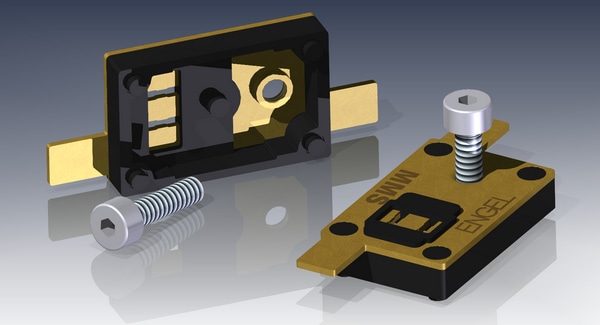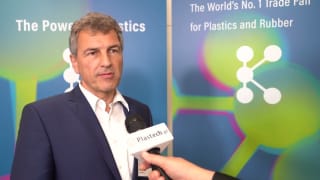Technical moulding: tie-bar-less technology for best-in-class consistency
The significance of multiple component technology in LSR processing is growing. In many applications it is the prerequisite for the integrated injection moulding process that connects thermoplastics and silicone in stable layers. One example of this is diaphragms, as used to ensure functionality and safety in pumps or ventilation systems. In collaboration with its partner Schneegans Freudenberg Silicon (Losenstein, Austria), Engel will be producing diaphragms made of glass fibre reinforced polyamide and liquid silicon at Fakuma 2015. The machine used here is an Engel victory 200H/60L/140 combi injection moulding machine with an integrated Engel viper 40 linear robot. In each cycle, the robot takes off eight finished parts and transfers the PA base bodies to the second set of cavities in the 8+8-cavity serial mould, where they are overmoulded with silicone. While LSR processing is going on, a new set of base bodies is created. In LSR technology, Elmet (Oftering, Austria) is involved in the trade fair exhibit as a further partner.Manufacturing two-component parts optimally leverages the efficiency potential of the tie-bar-less Engel victory machine. The high-volume, two-component mould reaches right up to the edge of the mould mounting platen and thus fits on a comparatively compact 140-tonnes injection moulding machine. Automation is a second efficiency factor. The linear robot can access the cavities directly from the side, without needing to negotiate obstacles, and thus operate safely despite the large gripper. Finally, efficiency factor number three results from the very high level of process consistency which the tie-bar-less design of the clamping unit ensures. The patented force divider enables the moving mould mounting platen to follow the mould exactly while clamping force is building up and ensures that the clamping force is evenly distributed across the platen face. Both the outer and inner cavities are therefore kept closed with exactly the same force, significantly reducing mould wear and raising product quality. Virtually burr-, waste- and rework-free and fully automated processing of LSR is the prerequisite to producing high-tech products made of liquid silicone in an economic way.
Teletronics: consistent process integration boosts competitive ability
For the first time at Fakuma 2015, Engel is presenting a highly integrated, fully automated process for manufacturing thermal switch housings – from the raw material to the 100% tested and labelled metal/plastic composite parts. The core of the production cell is an Engel insert 60V/35 single vertical machine. Upstream of the injection process there are a strip uncoiler, a press module and processing module for tapping a thread; downstream there are quality controls, laser marking and another press module.Thermal switches, such as those used for monitoring electric motors in automobiles or in the domestic appliance industry, are traditionally produced in a complex, multiple stage process. The metal components are typically punched and overmoulded at different locations. This not only requires a considerable logistics overhead, but also ties up a large amount of material because two independent processes need to be ramped up. This is a considerable cost factor, especially where non-ferrous metals are used.
The savings potential through process integration is correspondingly high. The system solution implemented by Engel in collaboration with its partner MMS Modular Molding Systems (Berndorf, Austria) guarantees the lowest possible unit costs and makes composite manufacturing economical even at locations with high wage levels.




